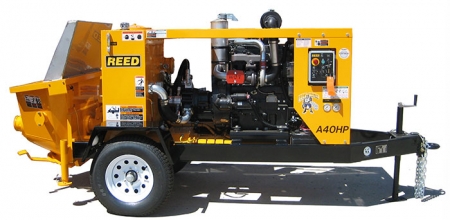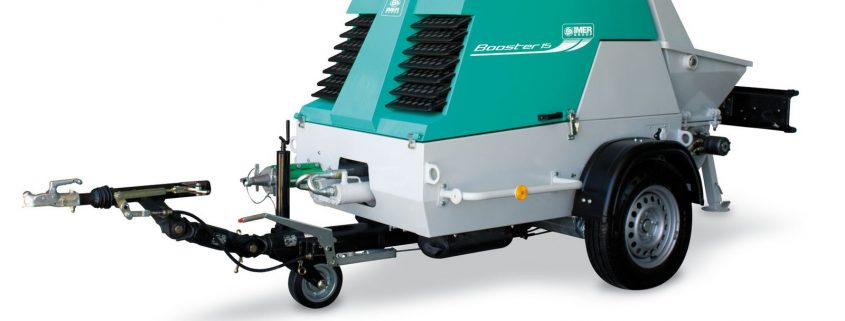Dry gunite nozzles are a crucial component for applying dry-mix shotcrete or gunite on construction projects. These specialized nozzles deliver a precise and controlled stream of dry material, ensuring efficient and effective placement on various surfaces. Selecting the right dry gunite nozzles will help you achieve optimal results and maximize productivity on the job site. Continue reading to learn about the features to consider when choosing dry gunite nozzles.
Nozzle Material and Construction
High-quality materials such as steel or carbide directly correlate to the durability and wear resistance of the nozzle. Steel nozzles are commonly used for their strength and resilience, while carbide nozzles offer superior wear resistance in abrasive environments.
Compatibility with Gunite Equipment
Dry gunite nozzles must be compatible to ensure seamless integration and operation with the gunite machine. Here are ways you can check for compatibility:
Assessment of Compatibility: Look at the nozzle size, thread type, and connection mechanism to ensure it functions properly during the application process.
Proper Fit and Connection: Proper fit and connection between the dry gunite nozzles and the gunite equipment are essential for efficient material flow and distribution. A snug fit prevents air leakage and ensures the material is delivered accurately and consistently.
Nozzle Thread Type and Size: Another aspect to consider is the thread type and size. Some nozzles have standard thread types such as NPT (National Pipe Thread) and others have proprietary thread designs commonly used in the industry.
Wear Resistance and Longevity
Given the high-pressure and abrasive nature of dry-mix shotcrete applications, wear resistance is a critical consideration for dry gunite nozzles. Nozzles that feature durable coatings or treatments can withstand the rigors of prolonged use, minimizing wear and tear and maintenance requirements over time.
Spray Pattern and Material Distribution
Achieving a consistent and uniform spray pattern is an important factor so you can get optimal coverage while applying gunite. Nozzle configuration should facilitate efficient material dispersion without excessive overspray or wastage. If possible, get adjustable nozzles that offer additional versatility that suits specific project requirements.
Ease of Maintenance and Cleaning
Maintaining dry gunite nozzles in good working condition is essential for consistent performance and longevity. The nozzles you select should also be easy to disassemble and clean, with accessible internal components for inspection and maintenance. Nozzle design features such as smooth surfaces and anti-clog mechanisms can further prevent debris buildup and facilitate hassle-free cleaning.
Safety Features
Safety is paramount in construction and dry gunite nozzles should incorporate safety features to minimize the risk of accidents or injuries. Look for nozzles with trigger locks or guards to prevent accidental discharge and ergonomic design elements for operator comfort and fatigue reduction during prolonged use.
Cost Considerations
While cost is an important factor, be sure to consider the long-term cost implications of your nozzle selection, including maintenance and replacement expenses. Investing in high-quality dry gunite nozzles may entail a higher upfront cost but can result in significant savings over time through improved performance, durability, and reduced downtime on the job site.
Manufacturer Reputation and Support
When it comes to investing in construction equipment, including dry gunite nozzles, always go with a reputable manufacturer with a proven track record.
Reputation: A manufacturer’s reputation speaks volumes about the quality and reliability of its products. When doing your research, consider factors such as industry experience, customer reviews, and testimonials. Companies with a strong reputation are more likely to provide reliable dry gunite nozzles that meet or exceed your expectations.
Support: In addition to reputation, inquire about the available support channels, including technical assistance, warranty coverage, and customer service. Access to knowledgeable support staff can be invaluable in addressing troubleshooting needs, providing maintenance advice, or resolving product-related inquiries.
Warranty Coverage: Warranty coverage is another essential aspect to consider. A robust warranty policy will cover potential defects or malfunctions that may occur within a specified period after your purchase.
Customer Service: Lastly, responsive and attentive customer service is key to resolving issues. A manufacturer that prioritizes customer satisfaction and strives to address inquiries in a timely manner fosters trust and loyalty among its clientele.
Choosing the right dry gunite nozzles is essential for achieving efficient and effective shotcrete applications in construction projects. Consider the material’s construction, size and design, compatibility, wear resistance, spray pattern, and maintenance to help you select the optimal nozzles that meet your project requirements and performance expectations. Investing in high-quality dry gunite nozzles ultimately contributes to enhanced productivity, longevity, and overall project success. Click here to view our selection of dry gunite nozzles.











